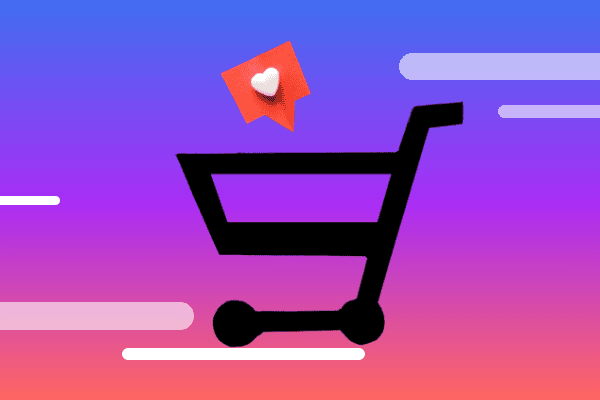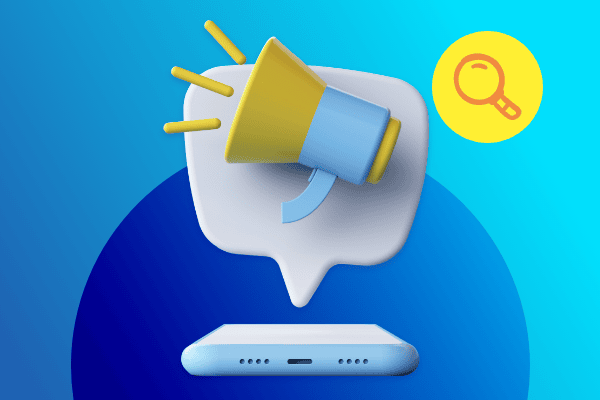Summary
Search marketing professionals face mounting challenges as campaigns grow in scope and sophistication. Managing thousands of keywords, multiple ad variations, and complex bidding strategies across several platforms requires significant time and expertise. Manual optimization often leads to missed opportunities and inefficient spending as marketers struggle to learn how to improve paid search performance while keeping pace with real-time fluctuations.
Paid search automation uses specialized software to streamline campaign management on platforms like Google Ads and Microsoft Advertising. These tools handle bid adjustments, budget allocation, and performance monitoring while making data-driven optimizations that would be impractical to implement manually.
The result? Better performance with less effort. Marketing teams can focus on strategy and creative thinking instead of spreadsheet management, while advertisers benefit from improved click-through rates, conversions, and reduced costs.
The following sections will explore various types of paid search automation and provide guidance on implementation, measurement, and maximizing results for your business.
The Evolution of PPC and Paid Search Automation
The progression of automation in paid search mirrors the growth of search advertising itself. Early PPC campaigns were managed entirely by hand—marketers adjusted bids manually, created each ad variation individually, and analyzed search terms through basic interfaces.
Platform-provided tools marked the first wave of automation. Publishers introduced features that simplified campaign setup and management:
- Basic rules-based systems (pause keywords below performance thresholds)
- Schedule-based bid adjustments (increase bids during high-conversion hours)
- Automated targeting expansions (find new audiences with similar behaviors)
- Simplified reporting and alerting functionalities
The real breakthrough came with the adoption of machine learning. Search campaign management shifted from manual controls to algorithm-driven optimization. Google’s introduction of responsive search ads transformed how marketers approached ad creation, allowing the system to test combinations and prioritize top performers automatically.
Today’s search ads automation extends well beyond basic tasks. Dynamic search ads now crawl website content to create highly relevant ads without requiring explicit keyword lists. Advanced systems analyze user behavior patterns to predict which search query is most likely to convert, adjusting bids accordingly. The landing page experience itself can be automatically optimized based on engagement metrics. This change continues to accelerate, with each advancement reducing manual workload while improving campaign effectiveness.
Want to stay ahead of the competition? Discover how AI in paid search is revolutionizing campaigns.
Types of Paid Search Automation
Modern paid search automation falls into four main categories, each addressing specific aspects of campaign management and optimization.
Bid Management Automation
Bid management automation eliminates manual bid adjustments by continuously analyzing performance data to optimize toward specific goals like maximizing conversions or hitting target ROAS. These systems incorporate contextual factors such as device type, location, and audience segments to make real-time bid adjustments during auctions. Advanced tools can balance multiple KPIs simultaneously, optimizing for both immediate conversion goals and longer-term metrics like customer lifetime value.
Campaign Management Automation
Campaign management automation streamlines operational aspects of paid search campaigns. Budget pacing tools prevent overspending while ensuring you capture high-value traffic. Performance monitoring systems continuously check campaign health metrics and alert marketers to significant changes, allowing immediate response to issues rather than discovering problems days later in reports. Structure optimization tools analyze campaign organization to identify improvements that align with both search engine best practices and business goals.
Creative Automation
Creative automation transforms the ad creation process by generating variations based on product feeds, landing page content, or performance data. Dynamic elements automatically customize messaging for specific audiences or contexts, allowing marketers to create hundreds of tailored ad experiences without manual effort. Responsive search ads represent the pinnacle of this automation type—marketers provide multiple headlines and descriptions, and algorithms test combinations to identify top performers for each search query.
Keyword Management Automation
Keyword management automation enhances targeting precision by analyzing search term reports to identify high-potential keywords and underperforming terms. Negative keyword identification tools flag irrelevant searches that trigger ads, preventing wasted spend. Intent analysis systems distinguish between informational, navigational, and transactional searches, enabling customized bidding and messaging strategies that align with the searcher’s position in the buying journey.
The Critical Role of Third-Party Platforms in Paid Search Automation
While publisher tools like Google Ads and Microsoft Advertising offer built-in automation features, they have inherent limitations that make third-party platforms essential for sophisticated advertisers. Publisher tools operate within their own ecosystems, creating data silos that prevent holistic campaign optimization across multiple platforms.
Third-party automation platforms unlock cross-channel insights by aggregating data from all advertising channels. This comprehensive view reveals interaction patterns between search, social, and display campaigns that would otherwise remain hidden. For example, you might discover that paid social exposure significantly increases conversion rates on search ads for certain audience segments.
For larger accounts, third-party platforms provide advanced capabilities that drive substantial performance improvements:
- Custom algorithm development tailored to specific business models
- Granular testing frameworks for isolating variable impacts
- Advanced anomaly detection systems that identify emerging trends
- Sophisticated attribution modeling beyond standard last-click models
- Automated budget reallocation across publishers and campaigns
Another crucial advantage is the integration with other marketing platforms and data sources. Third-party automation tools can incorporate CRM data, offline conversions, and inventory systems to optimize toward true business outcomes rather than proxy metrics.
While implementing third-party automation platforms requires additional investment, the ROI justification becomes clear for accounts of substantial size. Time savings alone often justify the cost, as teams can manage more complex campaigns without proportional headcount increases. For multi-channel advertisers managing significant budgets, these platforms aren’t merely a luxury—they’re a competitive necessity.
Looking to take your search campaigns to the next level? Check out how to optimize a paid search campaign for actionable strategies that complement automation with smart tactical adjustments.
AI and Machine Learning in Paid Search Automation
Artificial intelligence fundamentally transforms how paid search campaigns operate, with machine learning algorithms serving as the backbone of modern automation tools. These systems process billions of data points to identify patterns and optimization opportunities that human marketers would likely miss. Here’s how AI powers today’s search advertising:
- Predictive Bidding: Machine learning models analyze historical performance alongside real-time signals to anticipate conversion probability for each auction, adjusting bids accordingly before the search even happens.
- Pattern Recognition: AI systems identify performance trends across campaigns that would be impossible to spot manually, detecting seasonal patterns, competitor behavior changes, and emerging opportunities.
- Audience Modeling: Advanced algorithms continuously refine audience targeting by analyzing user behavior signals and conversion patterns, creating increasingly precise segments based on demonstrated intent rather than basic demographics.
- Natural Language Understanding: NLP technology interprets the meaning behind search queries rather than just matching keywords, allowing ad groups to target the intent behind searches rather than just specific phrases.
- Creative Optimization: Machine learning continuously tests ad copy variations to identify which messages resonate best with different audience segments, automatically prioritizing top performers.
- Anomaly Detection: AI-powered monitoring systems identify performance irregularities and potential issues far faster than manual reporting, alerting digital marketing managers to problems before they significantly impact results.
- Cross-Channel Intelligence: The most sophisticated systems analyze interactions between different marketing channels, revealing how paid search performance is influenced by other touchpoints in the customer journey.
As AI capabilities advance, the line between human and machine responsibilities continues to shift. The future belongs to marketers who understand how to collaborate with these intelligent systems rather than compete against them.
Implementing Paid Search Automation Successfully
Implementing paid search automation requires strategic planning and careful execution to achieve optimal results. The transition from manual management to automated systems involves several critical considerations to ensure success:
- Set Clear Performance Objectives: Define specific, measurable goals for your automation initiatives—whether improving ROAS, increasing conversion volume, or reducing cost per acquisition. Without clear targets, you’ll struggle to evaluate success.
- Assess Current Performance: Establish baseline metrics before implementing automation to accurately measure impact. Document your existing processes, performance levels, and pain points to identify where automation will deliver the greatest value.
- Select Compatible Tools: Choose automation solutions that align with your business needs, team capabilities, and existing tech stack. Consider factors like campaign size, industry complexity, and required integration points rather than simply pursuing the newest technology.
- Start With Controlled Testing: Implement automation in a limited segment of your account before full deployment. This controlled approach allows you to validate performance, identify potential issues, and build team confidence without risking your entire account.
- Maintain Data Quality: Ensure your conversion tracking is accurate and comprehensive before activating automation tools. Feeding algorithms flawed data will produce flawed results, regardless of how sophisticated the technology.
- Build Team Expertise: Train your team not just on using automation tools but on understanding how the underlying algorithms work. This knowledge enables more effective supervision and strategic guidance.
- Balance Automation With Human Judgment: Establish clear boundaries between algorithmic and human responsibilities. Automation excels at data processing and tactical adjustments, while humans provide strategic direction, creative insights, and business context.
- Plan For Transition Periods: Allow time for learning algorithms to gather data and optimize performance. Many automated systems require a calibration period before reaching peak effectiveness.
Successful automation implementation transforms how digital marketing managers approach search advertising. Rather than eliminating the need for skilled marketers, these tools elevate their role from tactical execution to strategic guidance and creative problem-solving.
Measuring the Impact of Paid Search Automation
Quantifying the benefits of paid search automation requires both performance metrics and operational efficiency measures. A comprehensive measurement framework helps justify automation investments and identifies opportunities for further optimization.
The most effective approach evaluates both campaign performance improvements and operational efficiencies:
- Performance Metrics: Track changes in conversion rates, cost-per-acquisition, quality score, and return on ad spend to measure direct campaign impact.
- Efficiency Gains: Document time saved on routine tasks like bid adjustments, keyword research, and reporting that can now be redirected to strategic initiatives.
- Scale Improvements: Measure how automation enables managing larger accounts or more granular campaign structures without proportional resource increases.
- Reaction Speed: Evaluate how quickly the system identifies and responds to performance changes compared to manual management.
- Decision Quality: Assess whether automation has reduced human error rates in campaign management through standardized processes.
Create a structured before-and-after comparison using consistent time periods and controlling for seasonal or market variables. When calculating ROI, include both direct performance improvements (increased revenue or reduced costs) and indirect benefits like freed capacity for high-value activities and reduced training requirements. This comprehensive view often reveals that automation delivers value well beyond the obvious metrics, making a compelling case for continued investment.
Skai’s Paid Search Automation Solution
Skai offers industry-leading paid search automation designed for sophisticated marketers managing complex campaigns. Our Paid Search platform addresses the challenges of scale, performance, and efficiency through advanced AI-powered tools that optimize every aspect of search management:
- Black Box Insights: Proprietary technology provides unprecedented visibility into opaque campaign types like Performance Max and Responsive Search Ads, revealing which assets drive success.
- Intelligent Optimization: Machine learning algorithms analyze search terms to identify wasted spend and automatically generate negative keyword recommendations.
- Advanced Creative Tools: Intent-Driven Messaging analyzes user search intent to identify new opportunities, while Generative AI Headlines align ad copy with actual search behavior.
- Cross-Channel Intelligence: Connect paid search performance with other channels for truly unified optimization and reporting.
Leading brands trust Skai to drive exceptional results. After implementing our algorithmic optimization, one retail client reduced cost-per-acquisition by 42% while increasing conversion volume by 15%. A financial services company leveraged our automation tools to manage three times the keyword volume without adding staff while improving ROAS by 27%.
Request a demo today and discover how our automation capabilities can transform your paid search performance with less effort and better results.
——-
Frequently Asked Questions
1. What is PPC in automation?
PPC automation refers to using software and algorithms to manage and optimize pay-per-click advertising campaigns with minimal human intervention. These tools handle tasks like bid management, budget allocation, keyword research, and ad creation based on predefined rules or machine learning models. PPC automation helps marketers save time, reduce human error, and improve campaign performance through data-driven optimization.
2. What is an example of a paid search?
Google Ads is the most common example of a paid search platform, where advertisers bid on keywords to display text ads in search results when users search for those terms. Other examples include Microsoft Advertising (formerly Bing Ads), Yahoo Gemini, and Baidu in China. These platforms operate on auction-based systems where advertisers pay only when users click on their ads.
3. What is the difference between programmatic and paid search?
Paid search targets users actively searching for specific terms, with advertisers bidding on keywords to display text ads in search results. Programmatic advertising uses automated technology to purchase display, video, and other visual ad inventory across websites based on user behavior and demographics rather than search intent. While both can be automated, paid search focuses on text ads triggered by user queries, whereas programmatic delivers visual ads based on user profiles and behaviors.
4. What tasks can paid search automation handle?
Paid search automation can manage bid adjustments, budget allocation, ad testing, keyword expansion, performance monitoring, and report generation. Modern automation tools can also analyze search term data, identify negative keywords, optimize ad schedules, and even generate ad copy using artificial intelligence. This comprehensive automation allows marketers to focus on strategy rather than repetitive operational tasks.







